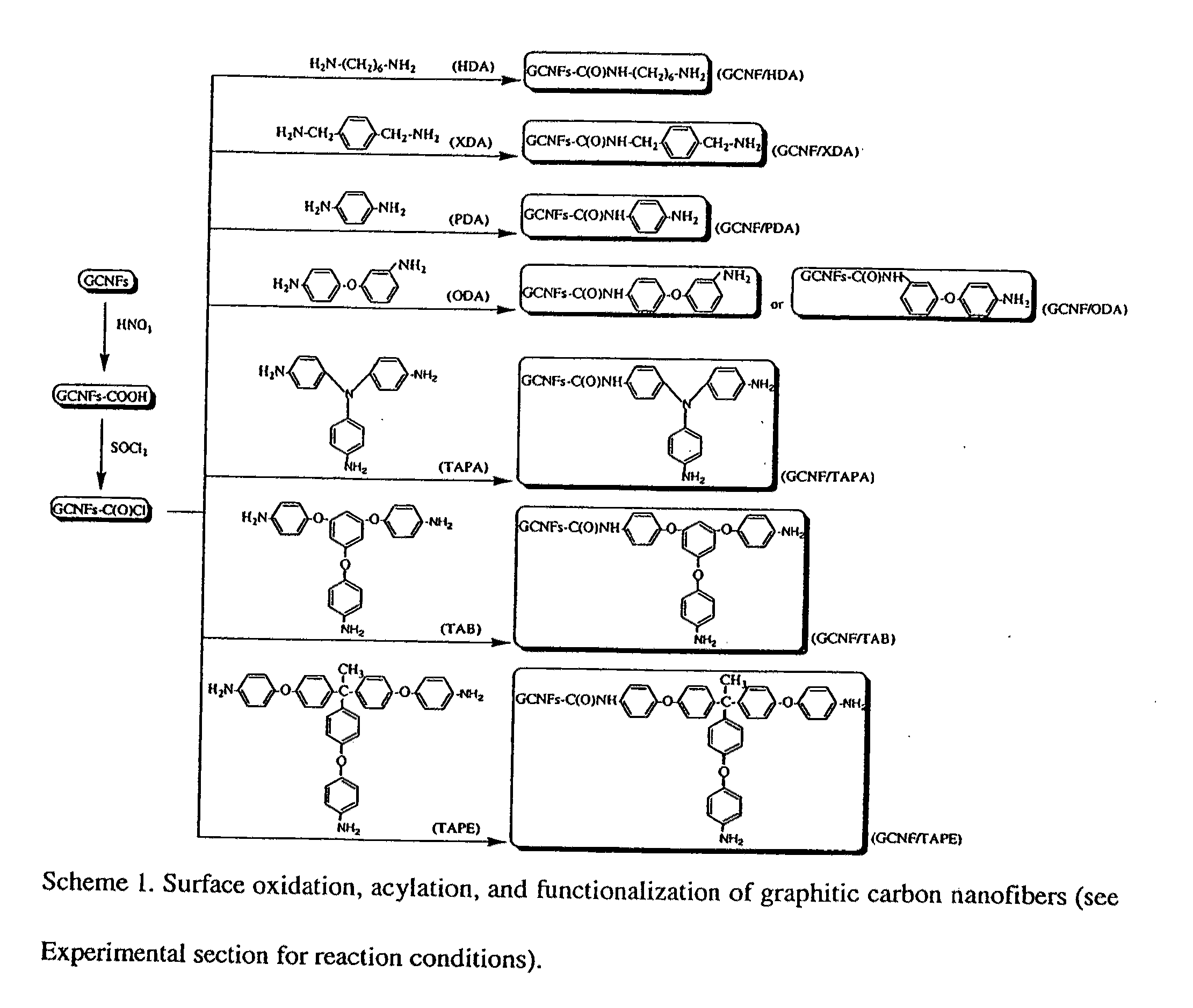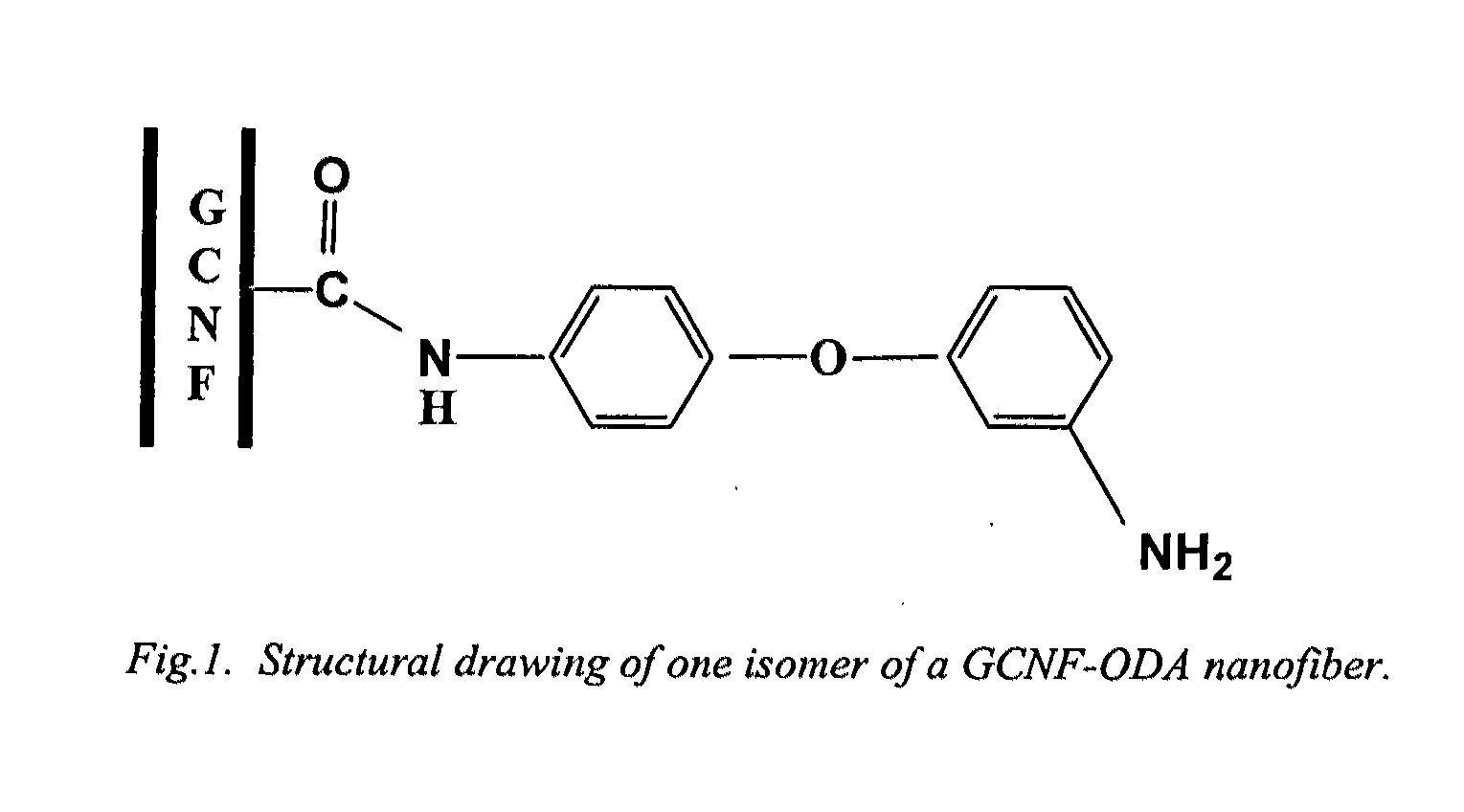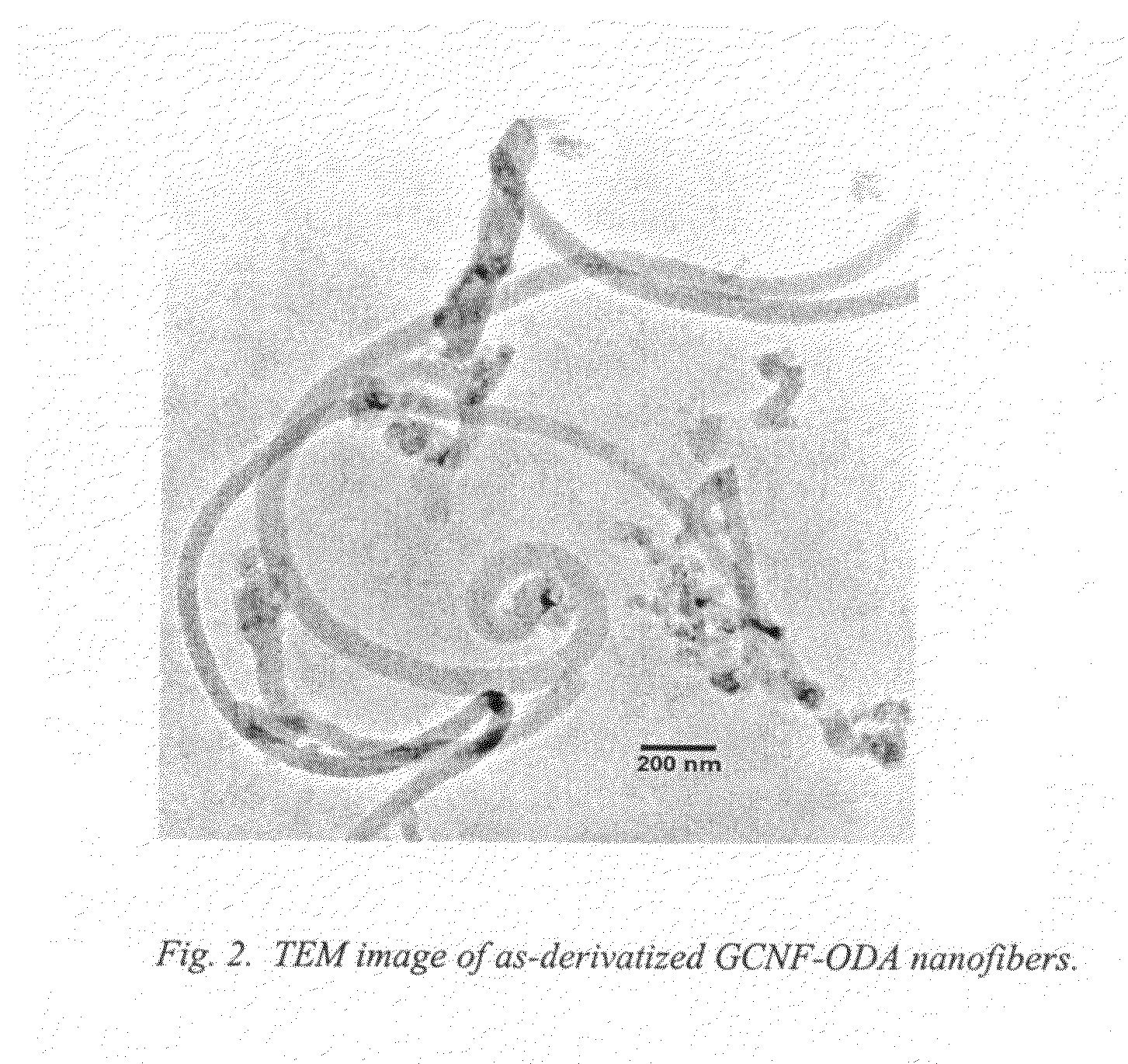Reactive graphtic carbon nanofiber reinforced polymeric composites
a graphene carbon nanofiber and polymer composite technology, applied in the preparation of carboxylic acid halides, carboxylic acid halide preparations, liquid carbonaceous fuels, etc., can solve the problems of preventing the efficient transfer of nanofiber properties to the composite matrix, affecting the wetting efficiency and high dispersion of carbon nanofibers within the polymer matrix, and affecting the uniform dispersion of nanofibers
- Summary
- Abstract
- Description
- Claims
- Application Information
AI Technical Summary
Benefits of technology
Problems solved by technology
Method used
Image
Examples
example 1
[0095]Preparation of GCNFs Surface-Derivatized with Oxydianiline (GCNFODA) Herringbone-type carbon nanofibers were synthesized as disclosed in U.S. Pat. No. 6,537,515 B1 and U.S. Patent Publication No. 2002 / 0054849 AI. A sample of as-prepared herringbone GCNFs was heated with concentrated nitric acid at 140° C. for 4 h. The collected oxidized GCNFs were washed with deionized water until the filtrate reached a pH value near 7 and then were dried at reduced pressure at room temperature. The dry, oxidized GCNFs were activated by reaction with thionyl chloride containing a small amount of dimethylformamide (DMF) at 70° C. for 24 h.
[0096]The reaction mixture was cooled and then filtered. The collected fibers were washed with tetrahydrofuran (THF) under nitrogen until the supernatant was colorless. The black solid was dried at room temperature and then reacted with excess oxydianiline (ODA) at 100° C. under nitrogen for 96 h. The mixture was cooled to room temperature. Excess oxydianiline...
example 2
[0098]Surface-derivatized GCNF-ODA nanofibers having dimensions of 50 to 200 nm wide and 5 to 10 microns long were reduced in length by ultrasonication using a commercial sonifier at a power level of 70 watts for a 60-min duration. Unexpectedly, ultrasonication of the surface-derivatized nanofibers has resulted in the production of composites having unusually high degrees of flexural strength. A diluent, butyl glycidyl ether (Aldrich Chemical Co.), was used as dispersant for this cutting procedure. The cut fiber / diluent mixture was stored in a sealed vessel for over 30 h at room temperature and was then divided into two parts. One portion was directly added into an epoxy resin, the other part was first dried in a vacuum oven at 100° C. for 2 days and then dispersed in epoxy resin. For each procedure, nanocomposites with fiber loadings of 0.3 wt % and 1.3 wt % were prepared. Two commercial liquid bisphenol A based epoxy resins, Epon® 828 with viscosity of 110-150 poise and 826 with v...
example 3
[0102]In one example of the present invention, r-GCNF-ODA derivatized nanofibers were found to be useful as reactive reinforcement for epoxy resin composite materials. Such fibers are “reactive” GCNF formed when GCNF-ODA fibers are reacted with epoxy monomer. (These fibers are shown in FIG. 4.) Mild sonication readily dispersed the shortened nanofiber segments throughout an epoxy resin. In addition, extension of the original ODA linker molecule to an ODA(glycidyl)n linker enhanced the wettability of the GCNF reinforcement material and reduced or eliminated any possible steric hindrance by the nanofiber bulk on further chemical reactivity at the linker molecule terminus, thereby facilitating covalent coupling across the GCNF / epoxy matrix interface during thermal curing.
[0103]Both r-GCNF-ODA / epoxy mixtures and the thermally cured r-GCNFODA / epoxy composite monoliths were found to exhibit a uniform, black appearance with no visual evidence of phase separation.
[0104]TGA degradation curve...
PUM
| Property | Measurement | Unit |
|---|---|---|
| lengths | aaaaa | aaaaa |
| lengths | aaaaa | aaaaa |
| lengths | aaaaa | aaaaa |
Abstract
Description
Claims
Application Information
 Login to View More
Login to View More - R&D
- Intellectual Property
- Life Sciences
- Materials
- Tech Scout
- Unparalleled Data Quality
- Higher Quality Content
- 60% Fewer Hallucinations
Browse by: Latest US Patents, China's latest patents, Technical Efficacy Thesaurus, Application Domain, Technology Topic, Popular Technical Reports.
© 2025 PatSnap. All rights reserved.Legal|Privacy policy|Modern Slavery Act Transparency Statement|Sitemap|About US| Contact US: help@patsnap.com



